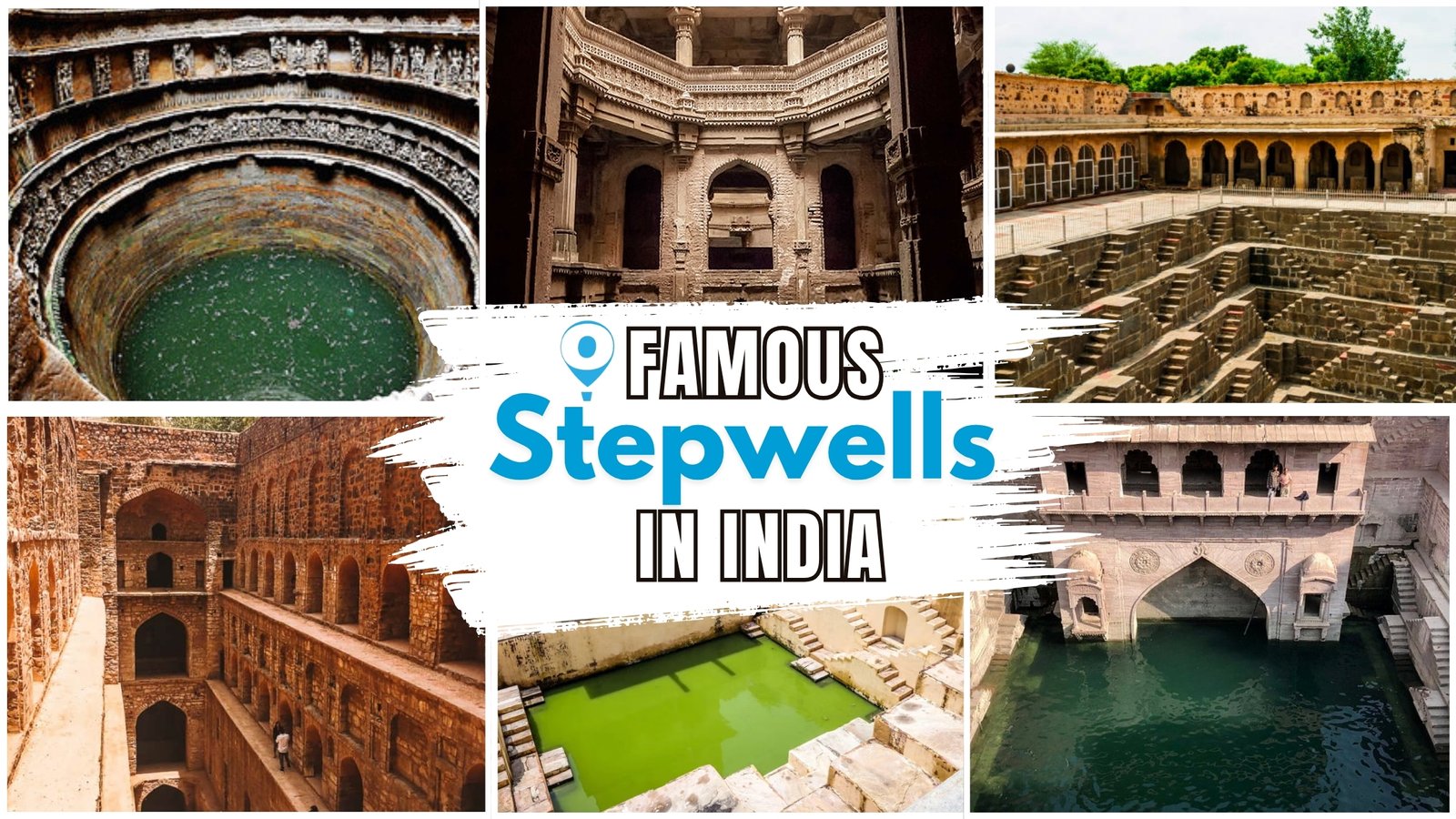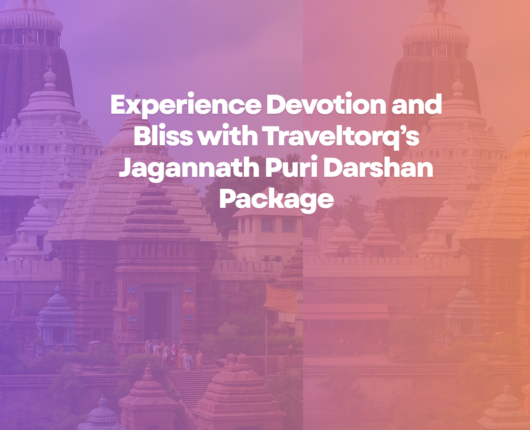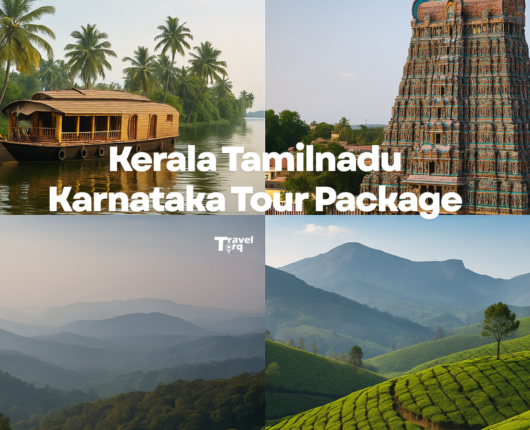Famous Stepwells in India: - Travel Torq
-
 By Bhaskar
By Bhaskar - November 6, 2025
- 0 Comments
- Uncategorized
India is a land of wonders — from majestic forts and grand palaces to temples that tell stories of devotion and art. But hidden among these architectural marvels lies a unique heritage often overlooked — the stepwells of India. These stunning subterranean structures reflect the ingenuity of ancient India, combining purpose with beauty, and showcasing how water, architecture, and culture were woven seamlessly into everyday life.
At Travel Torq, we believe travel is not just about ticking places off your list — it’s about uncovering stories buried in stone, time, and tradition. Join us as we dive deep — literally — into India’s most famous stepwells that continue to fascinate travelers, historians, and photographers alike.
🌿 What Are Stepwells?
Before we explore the famous ones, let’s understand what makes stepwells so special.
Stepwells are multi-storied structures built to collect and store rainwater, ensuring year-round access to water in arid regions. But they weren’t just practical — they were designed as cool retreats, social hubs, and spiritual spaces. With carved pillars, intricate sculptures, and symmetrical staircases, these architectural masterpieces showcase how ancient India blended function with beauty long before modern engineering existed.
1. Rani ki Vav – Patan, Gujarat
If there’s one stepwell that defines India’s architectural grandeur, it’s Rani ki Vav — literally, The Queen’s Stepwell.
Built in the 11th century by Queen Udayamati in memory of King Bhimdev, this UNESCO World Heritage Site is a seven-tiered wonder, descending 64 meters into the earth. Every level is adorned with over 500 intricately carved sculptures depicting deities, celestial beings, and mythological scenes.
Walking through Rani ki Vav feels like journeying through time — each step takes you deeper into a world where water, devotion, and design meet in perfect harmony.
📍 Best time to visit: October to March
💡 Travel Torq Tip: Combine your trip with visits to Modhera Sun Temple and the ruins of Anahilwada for a complete heritage experience in North Gujarat.
2. Adalaj ni Vav – Ahmedabad, Gujarat
If there’s one stepwell that defines India’s architectural grandeur, it’s Rani ki Vav — literally, The Queen’s Stepwell.
Built in the 11th century by Queen Udayamati in memory of King Bhimdev, this UNESCO World Heritage Site is a seven-tiered wonder, descending 64 meters into the earth. Every level is adorned with over 500 intricately carved sculptures depicting deities, celestial beings, and mythological scenes.
Walking through Rani ki Vav feels like journeying through time — each step takes you deeper into a world where water, devotion, and design meet in perfect harmony.
📍 Best time to visit: October to March
💡 Travel Torq Tip: Combine your trip with visits to Modhera Sun Temple and the ruins of Anahilwada for a complete heritage experience in North Gujarat.
3. Chand Baori – Abhaneri, Rajasthan
Step into the village of Abhaneri, and you’ll find Chand Baori, one of the oldest and deepest stepwells in the world. With over 3,500 perfectly symmetrical steps arranged in precise geometric patterns, this 9th-century marvel is pure visual poetry.
The stepwell descends about 13 stories deep and is surrounded by ornate galleries. In ancient times, it served as a cool gathering place for villagers and royals alike, maintaining a temperature that was always pleasant, even during Rajasthan’s scorching summers.
📍 Best time to visit: October to February
💡 Travel Torq Tip: Pair your visit with a trip to Jaipur — it’s just a two-hour drive away, making for a perfect heritage day trip!
4. Agrasen ki Baoli – Delhi
Right in the heart of India’s capital lies Agrasen ki Baoli, a 60-meter-long and 15-meter-wide architectural gem. Though its origins remain mysterious, it is believed to have been built by the legendary King Agrasen and later rebuilt by the Agrawal community.
With its striking series of symmetrical steps and echoing chambers, Agrasen ki Baoli offers a quiet escape from Delhi’s chaos. Its hauntingly beautiful atmosphere has made it a favorite spot for photographers, filmmakers, and history buffs.
📍 Best time to visit: Anytime during the year
💡 Travel Torq Tip: Explore it along with Connaught Place, India Gate, and Delhi’s vibrant cafés for a perfect mix of heritage and modernity.
5. Toorji ka Jhalra – Jodhpur, Rajasthan
Nestled in the blue city of Jodhpur, Toorji ka Jhalra is one of the most picturesque stepwells in India. Built in the 1740s by a royal queen, this stepwell remained buried for decades until it was restored recently — now serving as both a heritage site and a social space surrounded by cafés and local markets.
Its beautifully carved red sandstone steps and clear turquoise waters create an Instagram-perfect frame that travelers can’t resist.
📍 Best time to visit: November to February
💡 Travel Torq Tip: Enjoy sunset views from the rooftop cafés overlooking the stepwell — a scene straight out of a royal painting!
6. Panna Meena ka Kund – Jaipur, Rajasthan
Hidden near Amer Fort, Panna Meena ka Kund is one of Jaipur’s best-kept secrets. Built in the 16th century, this symmetrical stepwell is known for its mesmerizing crisscross pattern of steps and soothing yellow hue.
Unlike many other stepwells, Panna Meena ka Kund has a simple yet striking geometry that appeals to travelers seeking calm and symmetry.
📍 Best time to visit: Morning hours for soft light and fewer crowds.
💡 Travel Torq Tip: Combine your visit with Amer Fort and Nahargarh Fort for a complete royal experience.
✨ Why You Should Visit India’s Stepwells
Beyond their architectural brilliance, India’s stepwells tell stories of sustainability, community, and spirituality. They were ancient solutions to modern problems — water conservation, public gathering, and thermal comfort — all wrapped in divine artistry.
For travelers, they’re not just sites to see — they’re experiences to feel. The silence inside these wells, the play of sunlight on carved stone, and the sense of timelessness they evoke — all make for unforgettable memories.
At Travel Torq, we curate experiences that go beyond sightseeing. Whether you’re a history enthusiast, a culture lover, or a photographer, our personalized travel itineraries help you explore India’s hidden heritage through stories that live forever.
Unlike many other stepwells, Panna Meena ka Kund has a simple yet striking geometry that appeals to travelers seeking calm and symmetry.
📍 Best time to visit: Morning hours for soft light and fewer crowds.
💡 Travel Torq Tip: Combine your visit with Amer Fort and Nahargarh Fort for a complete royal experience.
Plan Your Stepwell Journey with Travel Torq
From Gujarat’s intricate vavs to Rajasthan’s majestic baoris, India’s stepwells are calling out to travelers who want to explore the past — one step at a time.
✨ With Travel Torq, you can:
Discover lesser-known heritage sites with local guides.
Plan custom trips combining stepwells, forts, and temples.
Capture stunning photos at offbeat locations.
Travel comfortably with curated stays and transportation.
Let’s make your next trip not just a journey, but a story worth telling.
📞 Call/WhatsApp: +91 81974 00467
🌐 Follow us on Instagram: @travel_torq
Plan Your Stepwell Journey with Travel Torq
India’s stepwells are a reflection of our ancestors’ genius — they built beauty into utility, turning every drop of water into a reason for art. Whether you’re standing at Rani ki Vav’s carved corridors or gazing into the endless steps of Chand Baori, you’re witnessing India’s soul in stone.
So next time you travel, go beyond the obvious.
Step into the past, descend into history — and let Travel Torq guide your way.





